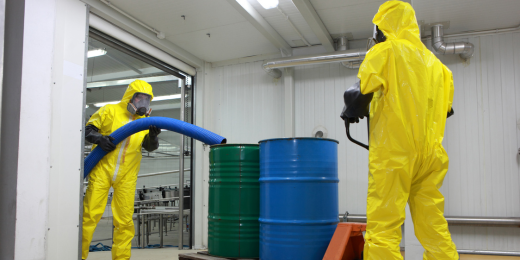The 4-Minute Rule for Reclaim Waste
Table of Contents3 Easy Facts About Reclaim Waste ShownThe Buzz on Reclaim WasteNot known Incorrect Statements About Reclaim Waste Some Ideas on Reclaim Waste You Should KnowThe Of Reclaim Waste
Discover the types, events, and kinds of fluid waste. Domestic sewage waste describes the waste and items from a property sewage-disposal tank. This sort of waste is produced by human beings in residences, schools, and various other buildings. This only includes sewage-disposal tanks that have a drainpipe area. The appropriate monitoring and disposal of residential sewage waste require liquid waste to be transferred to a sewer therapy plant where the correct approaches and equipment are applied to detoxify and deal with waste.
Business waste frequently includes potential hazards, such as flammable materials or a mix of fluid and solid waste products, and requires an advanced and detailed disposal procedure. The disposal of business waste typically involves the purification of waste prior to transport to guarantee safe and appropriate disposal. Industrial waste is developed from by-products and runoff of commercial processes and manufacturing.
This kind of waste can not make use of the exact same sewage management transportation or procedures as septic or commercial fluids. The hazardous waste management process calls for the assessment and screening of fluid waste prior to it undergoes the disposal procedure (liquid waste removal melbourne). Drainage waste is the liquid waste that originates from overflow and excess stormwater in extremely inhabited areas or cities
Drainage waste can trigger contamination and flooding if not taken care of appropriately. Making sure appropriate waste monitoring can prevent calamities and decrease ecological injury.
The Best Strategy To Use For Reclaim Waste
Call PROS Solutions today to learn more about our waste management and disposal services and the correct means to take care of the fluid waste you generate.
Do you recognize what takes place to your water when you disengage, flush the toilet or drain the cleaning equipment? No? Well, it deserves understanding. This supposed 'wastewater' is not just a vital resource but, after treatment, will certainly be launched to our land, rivers or the sea. Made use of water from bathrooms, showers, bathrooms, kitchen area sinks, washings and commercial processes is called wastewater.

water used to cool down machinery or tidy plant and equipment). Stormwater, a form of wastewater, is overflow that streams from farming and city locations such as roof coverings, parks, gardens, roads, courses check out here and gutters into stormwater drains pipes, after rainfall. Stormwater streams unattended directly to local creeks or rivers, eventually getting to the ocean.
How Reclaim Waste can Save You Time, Stress, and Money.
In Queensland, many wastewater is treated at sewage therapy plants. Wastewater is moved from residential or commercial websites with a system of drains and pump terminals, recognized as sewage reticulation, to a sewer therapy plant.
The Department of Natural Resources encourages local governments regarding managing, operating and maintaining sewerage systems and treatment plants. In unsewered areas, city governments may need householders to mount private or house sewage therapy systems to deal with residential wastewater from bathrooms, kitchen areas, bathrooms and washings. The Department of Natural Resources authorizes the use of house systems when they are proven to be effective.
In some new class, treatment of some stormwater to eliminate clutter, sand and gravel has actually begun utilizing gross toxin catches. Wastewater treatment takes place in 4 stages: Gets rid of solid issue.
Uses tiny living organisms recognizes as micro-organisms to break down and remove remaining dissolved wastes and fine bits. Micro-organisms and wastes are included in the sludge.
The 15-Second Trick For Reclaim Waste
Nutrient elimination is not available at all sewer treatment plants due to the fact that it calls for expensive specialized tools. Clear liquid effluent generated after treatment may still contain disease-causing micro-organisms - liquid waste disposal melbourne.

This typically suggests wastewater needs to be dealt with or impurities removed prior to it can be discharged to waterways. Most wastewater moves right into the sewage system. Under the Act, neighborhood federal governments administer authorizations and licences for environmentally pertinent tasks (Ages) entailing wastewater launches that could have a neighborhood impact. The division provides approvals and licences to ERAs involving wastewater releases that may have a regional or statewide effect.
Reclaim Waste - An Overview
Surveillance offers valid information concerning water top quality and can validate that licence conditions are being met. The info obtained through tracking gives the basis for making water top quality choices.
Comments on “Some Known Factual Statements About Reclaim Waste”